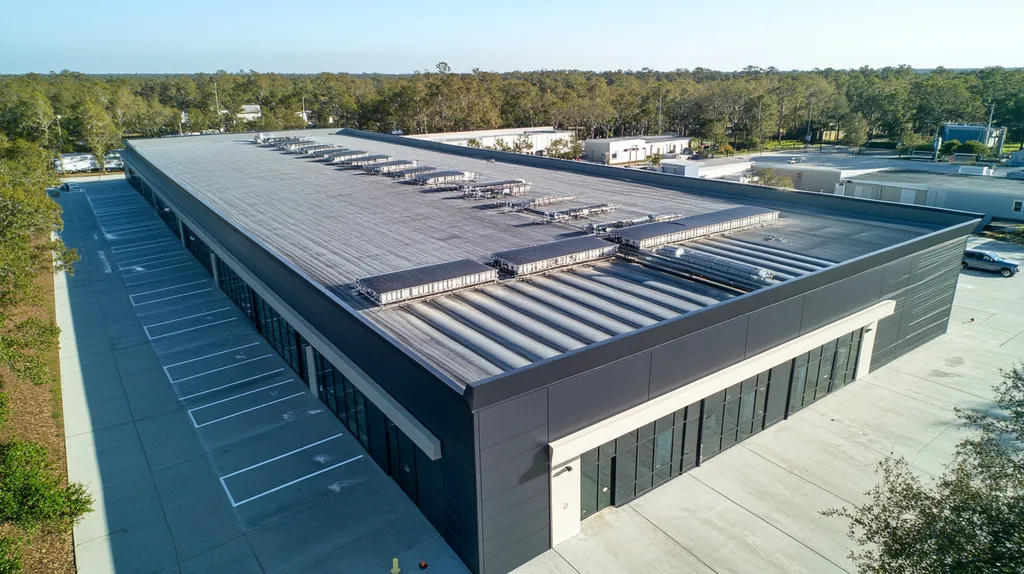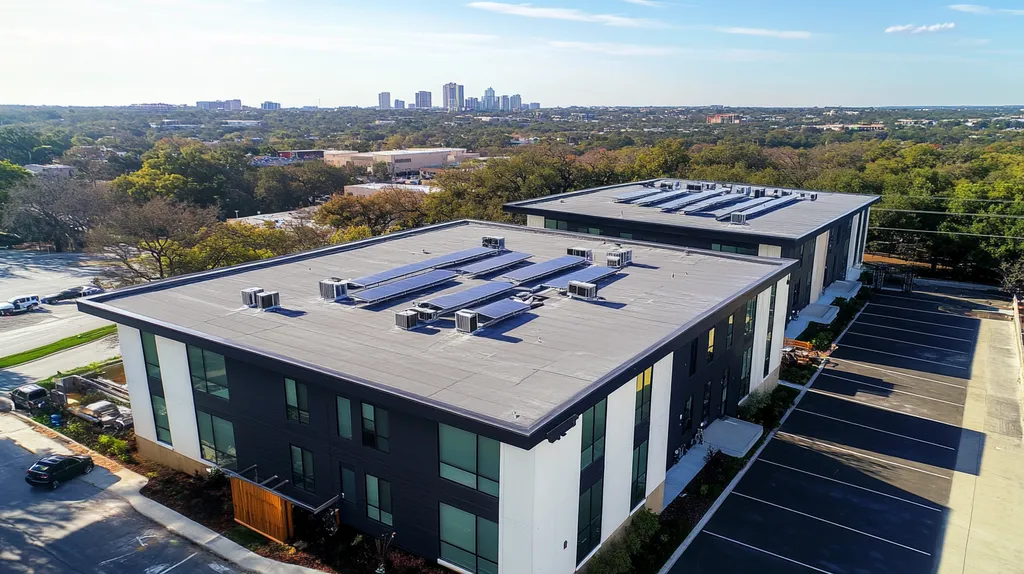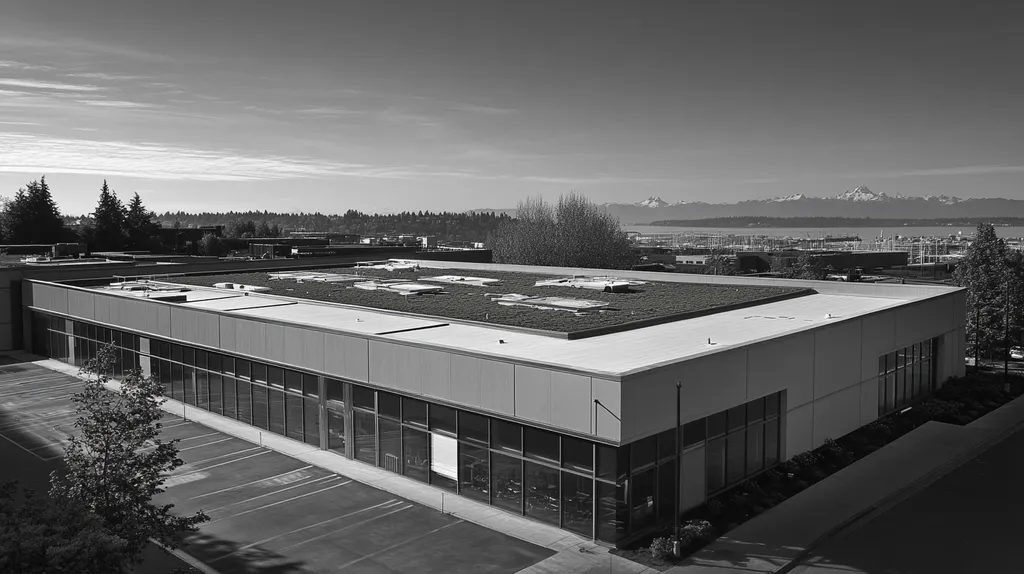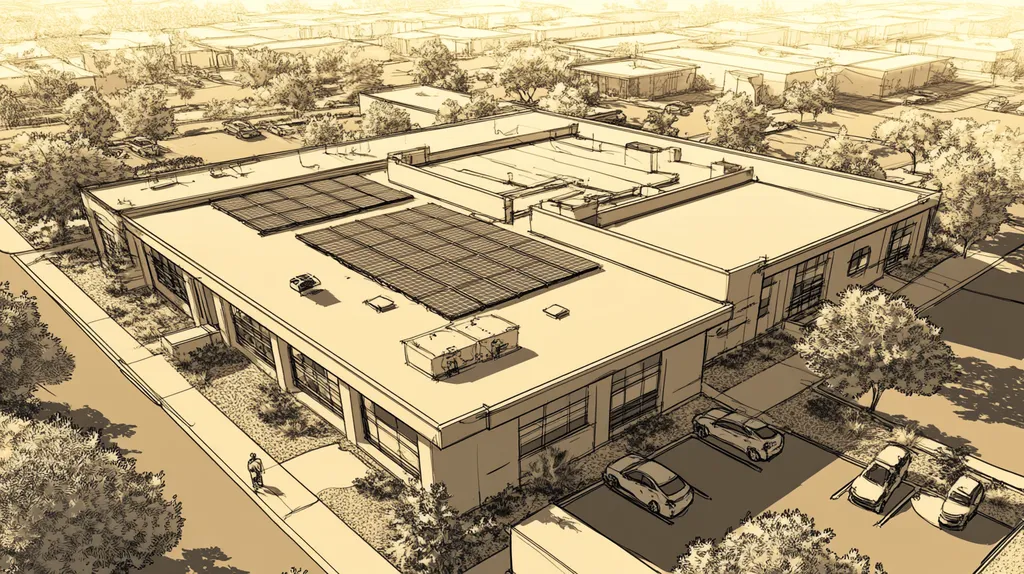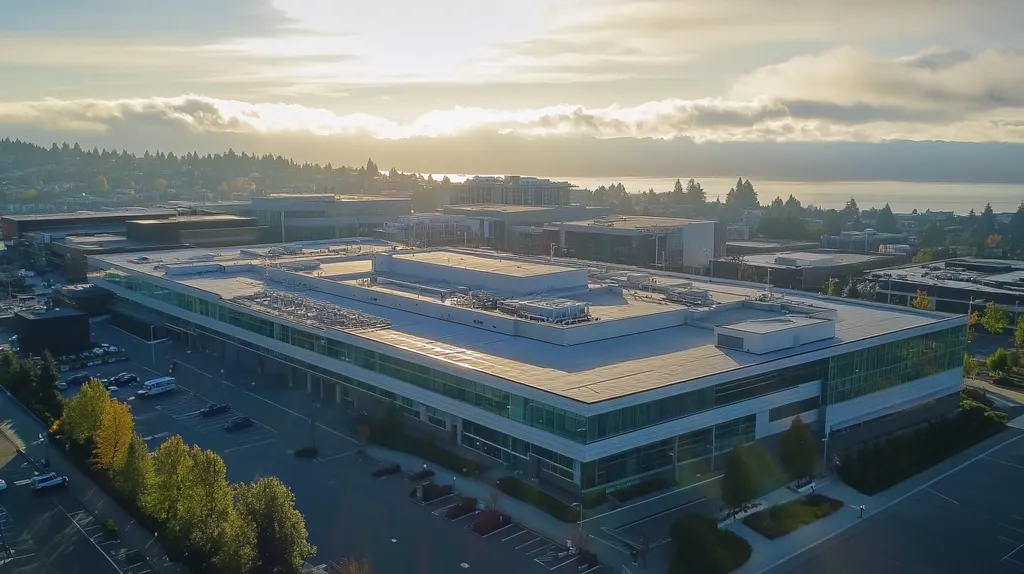Commercial roof coating warranties represent a $12 billion market segment, yet studies show that over 60% of property owners lack adequate protection due to misunderstood coverage terms and improper warranty selection.
This comprehensive guide demystifies warranty options for commercial roof coatings, addressing critical factors from material coverage to maintenance requirements that impact long-term building protection.
By understanding the core components of coating warranties, property managers can transform their highest-value asset from a potential liability into a well-protected investment delivering decades of reliable service.
SECTION 1: FUNDAMENTAL CONCEPTS
Commercial roof coating warranties represent a critical yet often misunderstood aspect of building protection. Studies show that improper warranty selection leads to over $2 billion in preventable repair costs annually across commercial properties. Understanding warranty fundamentals isn’t just about documentation – it’s about securing your building’s future and protecting your investment from unexpected expenses.
Types of Roof Coating Warranties Explained
Commercial roof coating warranties generally fall into three categories: manufacturer warranties, contractor warranties, and combination coverage. Each type serves a distinct purpose in protecting different aspects of your roofing investment.
Manufacturer warranties focus specifically on the coating product’s performance and durability. These warranties protect against material defects, ensuring the coating maintains its protective properties over time.
Contractor warranties address the quality of installation work and typically cover issues related to application techniques, surface preparation, and immediate post-installation problems.
Combination warranties merge both protections into comprehensive coverage packages, offering the most complete protection for commercial properties.
Coverage Scope: Materials vs. Workmanship
Material coverage specifically addresses the chemical and physical properties of the coating system. This includes protection against premature deterioration, loss of adhesion, and failure to maintain waterproof integrity.
Workmanship coverage focuses on installation quality and typically includes protection against application errors, improper surface preparation, and incorrect coating thickness.
The scope of coverage can vary significantly between providers. Some warranties include both labor and materials for repairs, while others may only cover the cost of replacement materials.
Understanding these distinctions becomes crucial when evaluating warranty options, as gaps in coverage could lead to significant unexpected expenses.
Warranty Duration and Legal Considerations
Warranty duration directly impacts the long-term value of your roofing investment. Modern commercial roof coating systems offer increasingly longer protection periods, with guarantees ranging from 10 to 35 years depending on the system chosen and contractor certification level. (source: GAF)
The duration of coverage often correlates with the quality and cost of the coating system. Premium systems typically come with longer warranties and more comprehensive protection.
Legal requirements for maintaining warranty validity typically include scheduled maintenance, proper documentation, and prompt reporting of any issues. Failing to meet these requirements can void coverage.
Property owners must carefully review warranty transfer provisions, as ownership changes can affect coverage continuation. Many warranties require specific procedures for maintaining protection during property transfers.
SECTION 2: SYSTEM COMPONENTS
Commercial roof coating systems represent a complex interplay of materials, expertise, and proper installation. Industry data shows that over 60% of premature coating failures stem from improper component selection or inadequate system integration. Understanding these critical elements not only ensures warranty compliance but also maximizes the return on your roofing investment through extended protection and enhanced performance.
Key Materials Covered Under Manufacturer Warranties
A complete roof coating system encompasses multiple components that work together to protect your building. These typically include primers, base coats, topcoats, reinforcement materials, and sealants for joints and penetrations.
Each material serves a specific protective function, from creating proper adhesion to providing UV resistance. Quality varies significantly between product lines, directly impacting warranty coverage terms and duration.
Momentive offers distinct warranty levels covering different aspects of their coating systems, from basic product coverage to comprehensive labor and material protection. (source: Momentive Silicones for Building)
Understanding material specifications becomes crucial as warranty coverage often depends on using approved system components in the correct combinations. Substituting materials or mixing systems from different manufacturers typically voids warranty protection.
Role of Contractor Certification in Warranty Eligibility
Manufacturer certification programs ensure contractors possess the necessary expertise to properly install coating systems. These programs typically involve extensive training on product knowledge, application techniques, and safety protocols.
Certification requirements vary by manufacturer and coating type. Some demand hands-on testing, while others require documented installation experience and regular recertification.
Working with certified contractors provides access to enhanced warranty options and longer coverage periods. Many manufacturers restrict their premium warranties to installations performed by their certified contractors.
Regular audits and inspections help maintain contractor certification status, ensuring consistent quality standards across all installations. This oversight directly impacts warranty validity and long-term coating performance.
Integration of Coating Systems with Roof Substrates
Successful coating performance depends heavily on proper substrate preparation and system compatibility. Different roof surfaces require specific preparation methods and primer systems to ensure proper adhesion.
Environmental factors like climate conditions and building use patterns influence substrate compatibility. Coastal locations may require enhanced corrosion resistance, while manufacturing facilities might need chemical resistance.
Surface profile, moisture content, and existing roof condition all impact coating adhesion. Proper testing and evaluation before installation helps prevent future failures and maintain warranty coverage.
Integration considerations extend beyond the initial installation to include maintenance requirements and repair protocols. Following manufacturer-specified procedures for these activities ensures continued warranty protection throughout the system’s lifespan.
SECTION 3: IMPLEMENTATION METHODS
Implementation methods can make or break a commercial roof coating warranty’s effectiveness. Industry data reveals that improper installation accounts for over 75% of premature coating failures, leading to millions in avoidable repair costs. Understanding and following correct implementation protocols isn’t just about maintaining warranty validity – it’s about protecting your building investment and avoiding catastrophic failures that can disrupt operations.
Approved Installation Techniques for Warranty Compliance
Proper installation begins with thorough surface preparation. This includes cleaning, repairs, and moisture testing to ensure the substrate can support long-term coating adhesion.
Application techniques must align with manufacturer specifications regarding temperature, humidity, and coating thickness. Even minor deviations from these requirements can compromise the entire system’s performance.
Quality control measures during installation should include wet film thickness testing, adhesion verification, and systematic documentation of environmental conditions. These checks create an audit trail for warranty claims while ensuring proper cure.
Post-installation inspections must verify uniform coverage, proper overlap at seams, and adequate protection around penetrations and flashings. These critical areas often determine system longevity.
Contractor Qualification and Skill Level Requirements
Material warranties cover manufacturing defects for 10-30 years, while workmanship warranties from contractors typically span 2-15 years and address installation-related issues. Understanding this distinction helps property owners select appropriate coverage for their needs. (source: RoofGideon)
Contractors must demonstrate proficiency through manufacturer certification programs. These programs validate technical knowledge, application expertise, and safety protocols.
Regular training updates ensure contractors stay current with evolving coating technologies and application methods. This ongoing education directly impacts installation quality and warranty validity.
Project history and references should demonstrate experience with similar coating systems and building types. Past performance often indicates future success in maintaining warranty compliance.
Documentation and Certification Process for Warranties
Comprehensive documentation begins before installation with substrate evaluation reports and project specifications. These baseline documents establish conditions that could affect warranty coverage.
Daily installation logs must track environmental conditions, material usage, and quality control measures. This documentation creates a verifiable record of compliance with manufacturer requirements.
Final inspection reports should include detailed photographs, material batch numbers, and thickness measurements. These records prove essential when addressing future warranty claims.
Warranty certification requires submission of specific documentation packages to manufacturers. Missing or incomplete records can delay or invalidate warranty coverage.
Maintenance documentation must track all roof activities throughout the warranty period. This ongoing record demonstrates proper care and helps preserve warranty protection.
SECTION 4: MAINTENANCE REQUIREMENTS
Maintaining warranty validity through proper roof coating care represents a critical but often overlooked responsibility. Studies show that 80% of commercial roof coating failures stem from inadequate maintenance rather than product defects. Property owners lose millions annually through voided warranties that proper maintenance could have preserved. Understanding and implementing required maintenance protocols protects both the warranty and the substantial investment in your roofing system.
Routine Inspections to Preserve Warranty Validity
Professional inspections form the foundation of warranty compliance, with most manufacturers requiring at least bi-annual evaluations. These inspections must systematically assess coating adhesion, surface integrity, and potential water infiltration points.
Critical inspection areas include roof penetrations, flashings, seams, and drainage systems. Early detection of minor issues through these assessments prevents them from developing into major problems that could void warranty coverage.
Timing inspections around seasonal changes helps identify weather-related damage and stress points. Spring inspections reveal winter damage, while fall assessments ensure readiness for harsh weather.
Documentation of inspection findings creates a vital record of roof condition and maintenance needs. This evidence supports both warranty compliance and long-term asset protection.
Approved Maintenance Practices for Coated Roofs
Proper maintenance begins with regular cleaning to prevent debris accumulation and coating degradation. Only manufacturer-approved cleaning methods and materials should be used to avoid inadvertently damaging the coating system.
Standing water must be addressed within 48 hours to prevent coating deterioration. Proper drainage maintenance and prompt repair of low spots helps prevent these warranty-threatening conditions.
Repairs must utilize approved materials and application methods to maintain system integrity. Even minor patches require careful attention to manufacturer specifications for surface preparation and material compatibility.
Chemical exposure from nearby equipment or processes requires special attention and more frequent inspections. Implementing protective measures around these areas helps preserve coating performance.
Record-Keeping and Reporting for Warranty Claims
Detailed maintenance logs documenting all roof activities serve as crucial evidence for warranty claims. These records should include inspection reports, cleaning schedules, and repair documentation with before and after photos.
To maintain warranty coverage, record-keeping must demonstrate consistent compliance with manufacturer requirements. Detailed logs of inspections, repairs, and maintenance activities provide the verifiable history needed for warranty claims. (source: CertainTeed)
Digital documentation systems help organize and preserve maintenance records. These platforms ensure quick access to historical data when needed for warranty claims or compliance verification.
Regular communication with manufacturers about maintenance activities demonstrates proactive management. This ongoing dialogue helps resolve potential issues before they impact warranty status.
SECTION 5: PERFORMANCE METRICS
Performance metrics form the foundation of effective roof coating warranties, yet many property owners lack clear standards for evaluation. Without proper measurement criteria, warranties can fail to protect against the most common causes of coating breakdown. Modern coating systems require specific assessment protocols to verify performance and maintain warranty validity throughout their service life.
Criteria for Leak Resistance and Durability Assessment
Leak resistance evaluation begins with standardized testing protocols that measure coating adhesion, elongation, and tensile strength. These metrics provide baseline data for comparing actual performance against warranty requirements.
Environmental exposure testing must simulate real-world conditions including UV radiation, thermal cycling, and precipitation patterns. This data helps predict long-term coating behavior under specific climate conditions.
Physical testing includes ponding water resistance, crack bridging capability, and impact resistance. These assessments verify the coating’s ability to maintain protection under stress.
Chemical resistance testing evaluates coating durability against common rooftop contaminants including acid rain, industrial emissions, and biological growth. Understanding these interactions helps prevent premature degradation.
Impact of Installation Quality on Warranty Performance
Installation quality metrics focus on three key areas: surface preparation, application consistency, and curing conditions. Each factor directly influences coating adhesion and long-term performance.
Surface profile measurements ensure proper mechanical bond between coating and substrate. Inadequate surface preparation accounts for over 70% of premature coating failures.
Coating thickness verification using wet and dry film measurements confirms proper material usage. Variations outside specified ranges can compromise system performance and void warranty protection.
CertainTeed’s warranty program demonstrates how installation quality impacts coverage levels, with their Integrity Roof System offering extended protection when proper installation protocols are followed. (source: CertainTeed)
Measuring Coating Integrity Over Warranty Period
Regular coating integrity assessments utilize non-destructive testing methods to track performance over time. These evaluations help identify potential issues before they compromise warranty protection.
Digital mapping technology creates detailed roof condition profiles that document changes in coating performance. This data supports warranty claims by providing objective evidence of system behavior.
Moisture detection systems identify water infiltration before visible damage occurs. Early detection allows for warranty-compliant repairs that prevent more extensive problems.
Performance trending analysis compares actual coating behavior against expected degradation curves. This information helps facility managers optimize maintenance timing and preserve warranty coverage.
SECTION 6: OPTIMIZATION STRATEGIES
Strategic warranty optimization can mean the difference between comprehensive protection and devastating exposure for commercial properties. Industry data shows that poorly optimized warranty packages result in $3.2 billion in avoidable repair costs annually. While 85% of commercial properties have some form of roof coating warranty, fewer than 30% have coverage properly aligned with their specific building use and environmental conditions. Understanding how to optimize warranty selection and leverage available protections has become crucial for protecting commercial roofing investments.
Selecting Warranty Options Based on Building Use
Commercial roof coating warranties from major manufacturers like Conklin, Versico, GAF, and Flex typically offer material coverage ranging from 10 to 25 years, with options for total system warranties that include both materials and labor at additional cost. (source: J. Smucker Contracting)
Building use patterns directly impact warranty requirements. Manufacturing facilities need enhanced chemical resistance coverage, while retail properties benefit more from appearance retention guarantees.
Geographic location influences optimal warranty selection through factors like UV exposure, precipitation patterns, and temperature extremes. Coastal properties require specific corrosion protection that inland buildings may not need.
Roof accessibility and maintenance requirements should guide warranty duration choices. Limited-access roofs may benefit from longer terms, while easily maintained surfaces can utilize shorter, renewable options.
Enhancing Roof Longevity Through Proactive Care
Proactive maintenance strategies significantly extend coating lifespans beyond standard warranty periods. Regular inspections should occur quarterly, with additional checks after severe weather events.
Surface cleaning protocols must align with coating chemistry to prevent inadvertent damage. Different coatings require specific cleaning agents and methods to maintain warranty compliance.
Drainage maintenance becomes critical for warranty protection, as standing water can void coverage. Systems should be inspected monthly during rainy seasons to prevent ponding issues.
Documentation of all maintenance activities creates a vital record for warranty claims. Digital tracking systems help organize inspection reports, repair records, and maintenance schedules.
Leveraging Contractor Partnerships for Extended Warranties
Strategic partnerships with certified contractors often unlock premium warranty options unavailable through standard channels. These relationships can extend coverage periods by up to 25% through enhanced installation guarantees.
Contractor certification levels directly impact available warranty terms. Higher certifications typically enable access to longer coverage periods and more comprehensive protection packages.
Regular contractor evaluations help maintain optimal warranty conditions. Annual reviews of installation quality and maintenance practices ensure continued access to premium coverage options.
Collaborative maintenance planning between property owners and contractors strengthens warranty protection. Joint development of care protocols helps prevent coverage gaps while maximizing system longevity.
Moving Forward
With over $12 billion in commercial roof coating warranties issued annually, property owners can no longer afford to misunderstand their coverage options and requirements.
Studies show that optimized warranty selection combined with proper maintenance can extend roof coating life by up to 40% while reducing lifetime repair costs by 60%.
The keys to maximizing warranty protection lie in selecting appropriate coverage levels, maintaining thorough documentation, and partnering with certified contractors who understand system requirements.
By implementing the strategies outlined in this guide, facility managers can transform their roof coating warranty from a basic guarantee into a comprehensive asset protection program that delivers decades of reliable performance.
The future of commercial roofing depends on informed warranty decisions made today.
FREQUENTLY ASKED QUESTIONS
Q. What are the types of commercial roof warranties?
A. Commercial roof coatings generally offer three warranty types: manufacturer, contractor, and combination coverage. Manufacturer warranties protect against material defects, while contractor warranties cover installation-related issues. Combination warranties provide a more comprehensive package, merging both protections to secure your investment effectively.
Q. How do industrial roof coatings work with warranties?
A. Industrial roof coatings require specific components like primers and sealants that impact warranty coverage. Each element must meet manufacturer’s specifications for an effective coating system. Incorrect material use can lead to voided warranties, so ensure all components are compatible and approved by the manufacturer.
Q. What is crucial for commercial roof warranty compliance?
A. Compliance with warranty terms hinges on proper installation and maintenance. Utilizing approved installation techniques and regularly documenting maintenance activities are fundamental. These practices not only assure adherence to warranty conditions but also prolong the roof’s performance and lifespan.
Q. What maintenance is needed for commercial roof coatings?
A. Regular inspections and maintenance are essential to uphold commercial roof warranties. Most manufacturers recommend bi-annual checks and prompt repairs of any issues. Keeping meticulous records of all maintenance activities ensures compliance and supports warranty claims, safeguarding your investment.
Q. How is performance measured for roof coating warranties?
A. Performance measurement relies on specific criteria like leak resistance and coating durability. Regular evaluations using standardized testing help assess these metrics. Tracking physical properties and environmental impacts ensures the coating performs well throughout its warranty life.
Q. What optimization strategies enhance roofing warranties?
A. Optimizing warranties involves selecting options based on building use and location. Each structure has unique needs influenced by its environment, making tailored warranty packages essential. Partnering with certified contractors can also unlock premium protections to maximize the value of your investment.
Q. Are there transfer provisions for commercial roof warranties?
A. Yes, many commercial roof warranties include provisions for transfer during property ownership changes. However, specific procedures must be followed to maintain coverage. It’s essential to review the warranty terms beforehand and ensure compliance to avoid losing protections with ownership transfer.

